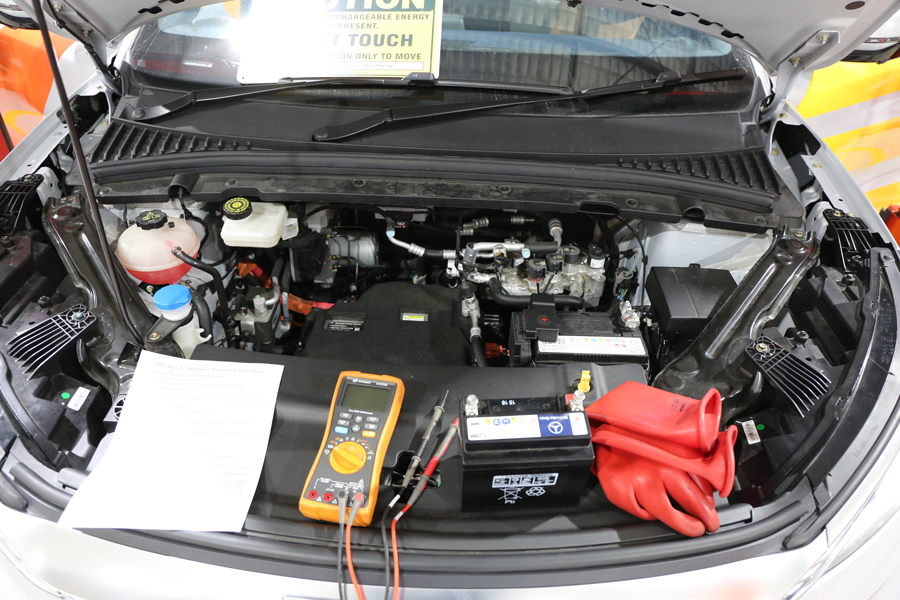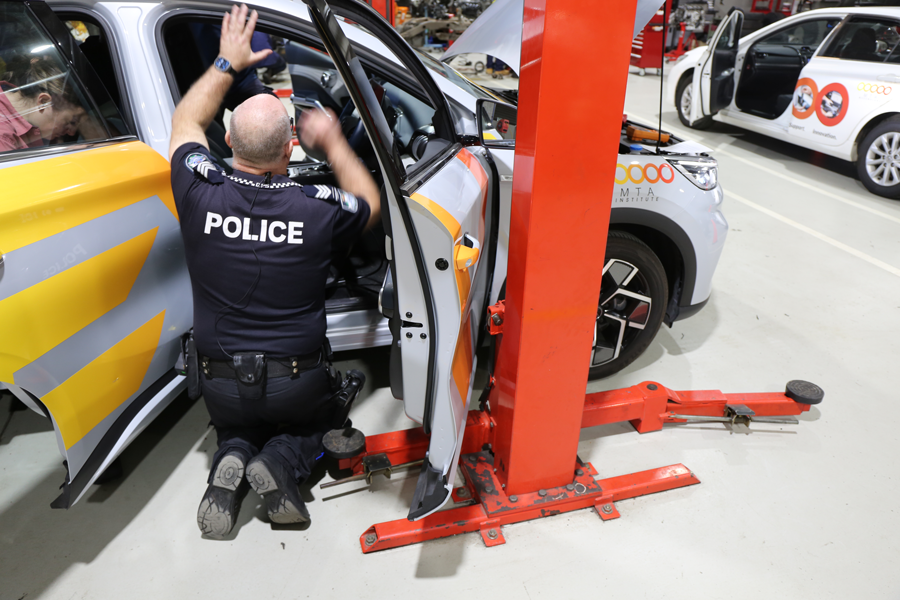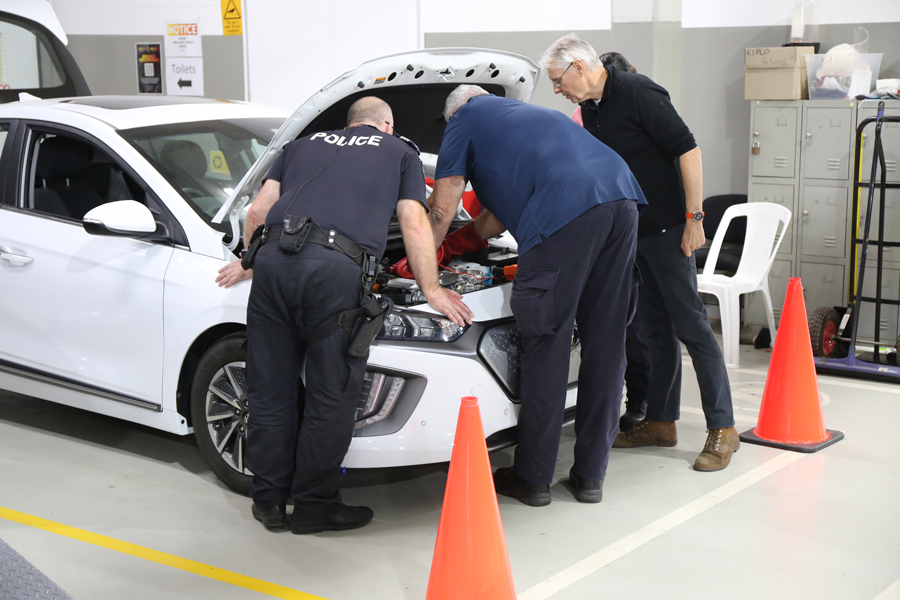While electric vehicles (EVs) offer numerous environmental and economic benefits, they also present unique challenges, particularly in emergency situations.
For first responders – such as firefighters, paramedics, police officers and forensic teams – understanding the specific dangers associated with EVs is crucial. Proper training can mean the difference between life and death in what can be the chaotic and traumatising aftermath of an accident.
MTA Queensland has been working with the Queensland Police Service (QPS) to deliver EV training to the QPS teams that must attend such accident scenes – in particular on how to ensure that the high-voltage system is depowered allowing them to do their work safely.
This is important, as the risks associated with EVs can be very serious indeed, and include:
- Battery Fires and Thermal Runaway: EVs are powered by large lithium-ion battery packs, which can catch fire if damaged. These fires are not only difficult to extinguish but can also lead to a phenomenon known as thermal runaway. Thermal runaway occurs when a damaged battery cell generates heat, which then causes adjacent cells to overheat and fail, leading to a rapid and uncontrollable fire. Such fires can reignite even days after the initial incident, posing ongoing risks.
- Electrical Shock Hazards: EVs operate at high voltages, often ranging from 400 to 800 volts. In the event of an accident, these high-voltage systems can become exposed, creating a risk of electrical shock.
- Hazardous Materials: The batteries and other components of EVs contain hazardous materials, including lithium, cobalt, and nickel. In an accident, these materials can be released, posing risks of chemical burns, inhalation of toxic fumes, and environmental contamination.
- Vehicle Construction: EVs can feature unusual construction techniques and materials. This complexity can make rescue efforts more challenging. For example, the presence of high-strength steel, aluminium, and composite materials can complicate cutting and prying operations. Additionally, the placement of batteries and other electrical components can create obstacles that must be navigated.
Clearly, training is essential to be able to identify and safely manage these risks and the two-day training program developed by MTA Queensland for the QPS focuses on the depowering and making safe of an EV at the site of an incident.

Elements of the course include the study of the layout, construction and componentry of electric vehicle; general safety and Personal Protective Equipment (PPE); identifying risks; and, of course, the ways to depower it to make it safe and to reinitialise power to it should that be required.
“These people are going to encounter a range of different situations when they arrive on a scene, and our first and foremost consideration is to make sure we maintain the safety of these people working around electric vehicles, as well as the safety of others around that scene,” said Keith Minchin, Technical Trainer with the MTA Institute who delivered the course. “In order to be able to work on EVs safely, they need an understanding of how electric vehicles work and the systems that are actually in that vehicle.
“On the first day we introduce the theory of the electric vehicle, the basic outline of the electronics and we’ll demonstrate various components. Then we migrate down into the workshop where we’ll actually work on vehicles, observe various components, and go through a depowering procedure where we can make the vehicle safe.
“With the understanding of the theory of how electric vehicles work and then the ability to visually identify components on the vehicle, we can have someone who can work within a range of different situations that they may face and carry out that work in a safe manner.”

Such training is crucial for first responders said Hayley Garrod, a Senior Constable from Townsville’s Forensic Crash Unit. The members of such units are tasked with investigating serious injury and fatal traffic crashes and Hayley undertook the course in June along with more than a dozen other officers. With EV numbers growing, it was, she said, very important to understand how to work with them safely.
“Obviously they’re becoming quite prevalent on the roads and that’s only going to increase. It’s very important for us to know how to make that safe for ourselves and everyone else at the scene,” said Hayley.
“The training that we have done has involved isolating and depowering electronic vehicles . . . there are several steps involved in doing that. I was initially quite apprehensive about it. However, after doing this training, I feel pretty confident that I can attend a scene successfully and depower the vehicles to make them safe. We also learned how to reinitialise the power back to the vehicles. so that they can continue to be used in the future.”
Delivering such tailored safety training is one of many EV-related initiatives MTA Queensland and the MTA Institute has developed. These include short, online micro-credential courses, EV inspection and servicing courses, and will also soon include the full EV apprenticeship – AUR32721 Certificate in Automotive Electric Vehicle Technology.
Source: Motor Trader e-Magazine (July 2024)
18 July 2024


